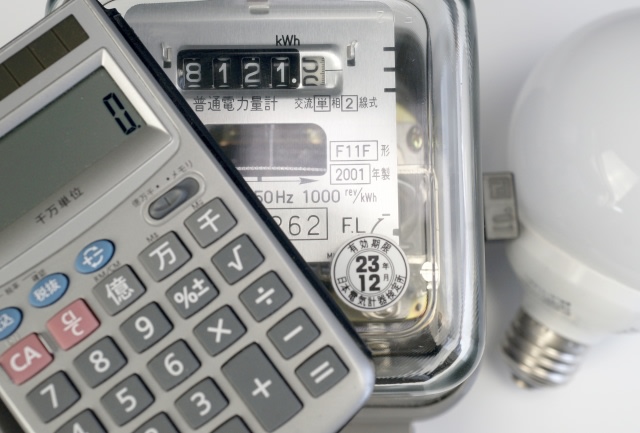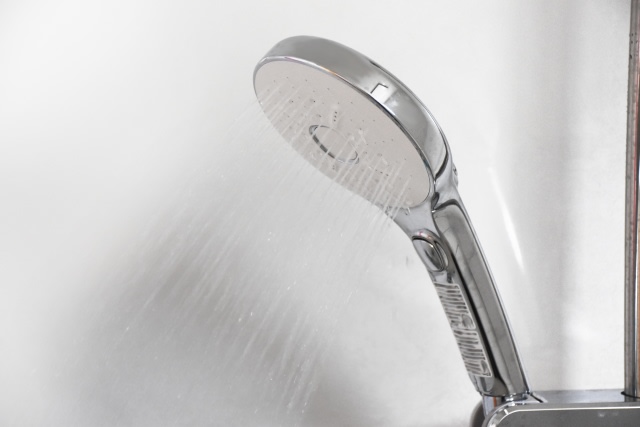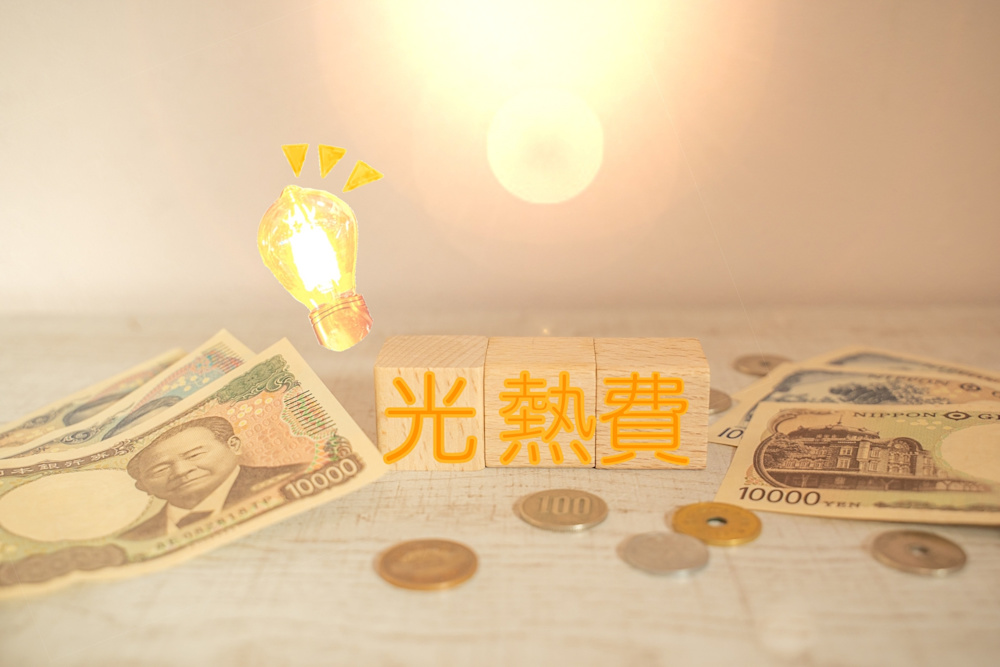Updated April 21, 2025
Utilities in Japan: Everything You Need to Know
Whether you’re moving to Japan from abroad or relocating within the country, getting settled into a new home involves a lot of preparation. One of the main ones will be setting up your utilities.
So, let’s walk through everything you need to know about setting up utilities in Japan, from gas, electricity, and water to how to manage paying for your utilities in Japan. We’ll also explain how to set these up for first-time use, but first, let's cover some key points about utilities in Japan.
Things To Know Before Setting Up Utilities in Japan
Unlike some countries where utilities might be bundled into your rent, in Japan, you typically need to set up each service individually. While the process might seem a bit intimidating if you’ve never had to deal with utilities before, it’s actually quite manageable once you know what to expect.
To make things clearer, let’s answer a few common questions.
In this article: 📝
Does Rent in Japan Include Utilities?
As we mentioned, utilities aren’t typically included in the rent, but there are exceptions to this rule. If you live in a shared house or an apartment geared toward foreign residents, utilities are more likely to be included in your monthly rent.
That said, it’s always best to check with your landlord because how utilities are handled is up to the individual contract/agreement you make.
Still, if you have a private living arrangement, it’s safe to say that you typically need to set up each service individually.
When Do I Need To Apply For Utilities?
Word of advice from us: Do not leave utilities to the last minute! Ideally, you should start organizing them as soon as you know your move-in date.
Electricity and water are pretty straightforward to set up and can usually be started on your move-in day. Gas, on the other hand, often requires an appointment for the technician to turn it on. Don’t try to do it yourself, as it’s both illegal and dangerous.
So, plan accordingly to avoid a chilly first night in your new home!
Do I Need To Leave Home To Set Up Utilities?
Not at all! In fact, most utility companies in Japan offer online applications, making the process simple and efficient. Even if the online form is not available in English, you can simply use your browser’s translate function to navigate the process.
That being said, if the language barrier is a concern or you prefer speaking to someone directly, many companies also provide phone support, some even available in English.
You also have the option to work with the property management service where you can get utility support in English.
What Do I Need To Set Up Utilities in Japanese
When applying for utilities in Japan, have the following key information ready to ensure a smooth and efficient setup process:
Full name: Make sure the name matches the one on your lease.
New address: The exact address of your apartment or house.
Move-in date: The date you want your utilities to start.
Contact information: A reliable phone number or email address for any follow-up.
Payment details: Decide how you’ll handle your bills (bank account for automatic withdrawals or a credit card) and provide payment information accordingly.
With the basics out of the way, let’s get into the details of how to set up your electricity, gas, and water individually.

Electricity: Setting Up Electric Utilities in Japan
To set up electricity, you first need to select the provider.
It’s important to note that Japan’s voltage is 100 volts—50/60 Hz AC. So, be cautious about using appliances from other countries—incompatible voltages can ruin your devices.
It’s also good to know that 50 Hz is common in eastern Japan, including Tokyo, while 60 Hz is standard in Kobe, Osaka, Kyoto, and other western areas. Various electricity providers operate in each prefecture, which we’ll introduce below.
With this in mind, you can apply for an account online or over the phone, but please note that some providers may not offer online applications. Many utility offices are closed during year-end holidays (December 29 to January 3), so plan accordingly.
Once your electricity account is set up, all you need to do is find your circuit breaker, which is usually located near the entrance or bathroom of your home, and flip the main switch to the “ON (入)” position.
Your electricity should then be ready to go. For those seeking eco-friendly options, many providers nowadays offer renewable energy plans as well. So, it’s worth exploring your choices before signing up for anything.
Common Electricity Providers in Japan
Here’s a list of common electricity providers in Japan according to prefecture. We’ve linked the moving procedures page for each company below. Please use your browser’s translation tool if needed:
Tokyo and Kanagawa: TEPCO (Tokyo Electric Power Company)
Fukuoka: KYUDEN (Kyushu Electric Power Company)
Ehime, Kagawa, Kochi, and Tokushima: Yonden (Shikoku Electric Power Company)
Osaka and Kyoto: KEPCO (Kansai Electric Power Company)
Toyama and Ishikawa: Rikuden (Hokuriku Electric Power Company)
Aichi: Chubu Electric Power Miraiz
Tottori, Shimane, Okayama, Hiroshima, and Yamaguchi: CEPCO (Chugoku Electric Power Company)
Hokkaido: Hokkaido Electric Power Company
Okinawa: Okiden (Okinawa Electric Power Company)
Akita, Aomori, Fukushima, Iwate, Miyagi, Yamagata, and Niigata: Tohokuden (Tohoku Electric Power Company)
How To Set Up Gas With Japanese Utility Companies
For gas, you’ll need to determine whether your home uses city gas (都市ガス) or liquid propane gas (LPガス).
City gas, which is supplied by utility companies such as Tokyo Gas, is generally cheaper and more commonly found in urban areas.
Liquid propane gas, on the other hand, is delivered in tanks and is often used in rural or older properties. You typically don’t have a choice between the two, as the type of gas supply is predetermined by your property.
To set up your gas, you must call your local gas company and schedule an appointment for a technician to visit your home.
Once a technician arrives, they will turn on the gas and perform a safety check for you, which usually takes about 10 to 20 minutes. Make sure you’re home for this appointment, as it’s required for the activation process.
Japan Utility Companies For Gas
Although more brief compared to the options in electricity, here’s a list of gas providers and the areas/prefectures they cover in Japan:
Tokyo Gas (Japanese website) operates in Tokyo, Yokohama, and the surrounding cities/prefectures
Osaka Gas covers Osaka, Kyoto, and surrounding cities/prefectures
Toho Gas (Japanese website) is the provider for Gifu, Aichi, and Mie Prefectures
Saibu Gas provides gas to Fukuoka, Saga, Nagasaki, and Kumamoto
Kita Gas (Japanese website) is the gas provider for some cities in Hokkaido
Setting Up Water Utilities in Japan: How To Apply for Water in Japan?
In Japan, water services are provided by your local municipality or prefecture.
To set up water, contact the local water bureau in your area. Most applications can be easily completed online, and if you’re not fluent in Japanese, simply use your browser’s translate feature to navigate the process.
If you’re more comfortable with direct communication, many bureaus also offer phone support. You can simply call your local water bureau and tell them you want to set up water in your new place.
Even if there’s running water when you move in, you’ll still need to apply to set up the water service contract in your name to avoid being charged for another tenant’s usage. Similarly, when moving out, remember to cancel your water contract to avoid unnecessary charges.
If you already have water supplied but it’s been cut, you’ll need to turn the valve located near the water meter to restore service to your apartment/house.
FYI: In most Japanese apartments, the water meter is found in a metal box right outside your front door, often next to the gas meter.
Even if your place doesn’t have running water, the water service setup process is typically pretty straightforward. Just like electricity, it’s often activated remotely. To make the process go as smoothly as possible, ensure that you have your address, move-in date, and contact details ready when reaching out to the bureau.

Japan Utility Companies for Water
As we mentioned, water in Japan is provided by your local municipality. Here’s a list of some of the companies that provide water to Japan’s most populated cities:
Fukuoka City Waterworks Bureau (Japanese website)
Kyoto City Waterworks Bureau (Japanese website)
Nagoya City Waterworks Bureau (Japanese website)
Sapporo City Waterworks Bureau (Japanese website)
Switching Japanese Utility Companies
Even if you already have all your utilities set up, you might want to switch providers.
For instance, some utility companies offer sign-up bonuses for switching from another provider, while others provide cost-effective bundles of gas and electricity services.
You might also be dissatisfied with your provider for other reasons. In any case, switching providers is an option. Here’s how.
Switching Electricity Providers
Just like the setup process, changing electricity suppliers in Japan is easier than one might think. First, check your current contract to ensure you won’t face early termination fees, which can apply if you switch before the end of a one-year contract. Most contracts are flexible, but it’s always best to double-check.
Once you’ve decided to switch, contact your chosen supplier directly and have your current contract number and identification details from your latest bill ready.
The new provider typically handles the transfer process for you. If your home requires a smart meter, the switch might take a couple of weeks, but without this requirement, it’s often finalized within a week.
Switching Gas Suppliers
Like electricity, you can switch gas suppliers by contacting the new company directly.
Once again, be sure to have information like your customer number, meter reading, and address at hand when doing this.
A good reason for switching gas suppliers is finding a better deal in a bundle that includes both gas and electricity plans. These bundles, usually offered by the same provider, offer both cost savings and the convenience of managing multiple utilities through a single account.
Switching Water Providers—Is It Possible?
Unlike electricity and gas, water services in Japan are provided exclusively by the local water bureaus in each municipality. Because of this, switching water suppliers isn’t possible.
How To Cancel Utilities in Japan
Canceling utilities in Japan is as straightforward as setting them up. To cancel your contract, contact your provider company either online or via phone.
Still, timing is key to avoiding unnecessary charges here. So, here are our tips for canceling each of your main utilities without a hitch:
Canceling your electricity contract: Make sure to schedule the cancellation at least a week before your move-out date. Since you’ll likely need electricity until the day you leave, set the contract to end exactly on your moving day. This ensures you’re not left in the dark, and it also prevents you from being billed for the next tenant’s usage.
Canceling your gas contract: Canceling your gas contract requires a bit more coordination, but it’s still no rocket science. This process is a bit more complicated because a technician from your gas company will have to visit your home to turn off the supply. Make sure to book your appointment for your moving day to keep your hot water running until the very last minute. The process is quick, usually taking less than 20 minutes.
Canceling your water contract: To avoid getting billed for the next tenant's water usage, notify your local water bureau to end your contract at least three days to a week before moving out. If the water meter at your apartment is located in an accessible place, ensure a final reading is taken to finalize your bill accurately.
As long as you stick to these rules, you should have a generally easy time canceling your contacts. With all the setup and cancellation processes out of the way, let’s see how you can pay your utility bills.
How To Pay Utilities in Japan
In Japan, electricity and gas bills usually come monthly, but the water bill is issued every two months. Paying these bills is the easy part—whether you like a traditional approach and prefer human contact or would like to pay digitally, there’s an option to suit everyone.
Paying In Person
You can pay your utility bills at any convenience store (konbini), which are ubiquitous in Japan.
All you have to do is take your bill to the counter, where the staff will scan the barcode on the bill. Once you pay, you’ll receive a receipt, called a “ryoushuusho (領取書)”, stamped with the date and the store’s seal.
This is pretty much it for the payment part, but make sure to keep the receipt as proof of payment at the end.
Also, keep in mind that most konbini stores only accept cash, so if you don’t usually carry cash, hit up the ATM before you walk up to the counter.
Credit Card Payment or Automatic Withdrawal
If you prefer a hassle-free method instead, consider setting up automatic payments for your utility bills. This can be done using your credit card, debit card, or via direct bank withdrawal, which you can set up by contacting your utility provider.
This method ensures you never miss a due date, and some credit card companies even offer reward points for your transactions, giving you a small return on your bills. If you’d like to learn more about reward systems and point programs, check out our point cards article.
However, note that you might need a Japanese credit card or bank account, so check this before deciding on this payment method.
Digital Payments
If you don’t like paying at a convenience store or dealing with your bank, you can also use digital payment apps, such as LINE Pay.
You can complete the payment instantly by scanning the barcode on your bill using your phone camera.
While this method is surely a convenient option for those who want to skip the trip to the konbini, be cautious not to scan the same bill multiple times as it could result in duplicate charges.
Average Monthly Utility Costs: How Much Do Utilities Cost in Japan?

While providing an average cost will give you an idea of what to expect, it’s still worth noting that utility costs in Japan vary based on location, season, and personal usage.
With this warning in mind, here’s a breakdown of typical monthly utility expenses in Japan:
Electricity: On average, you can expect to pay between ¥5000 and ¥8000. Costs often increase in summer due to air conditioning and in winter with the use of heating appliances.
Gas: Monthly gas bills range from ¥3000 to ¥4,500. However, this can significantly spike if you use gas for heating or hot water.
Water: Water bills tend to be lower than the other utility bills, averaging around ¥2000-¥3000 every two months.
With all that being said, it’s worth noting that utility costs in Tokyo, where many foreigners reside, can be slightly higher than in other cities. For instance:
Electricity in Tokyo: Monthly costs range from ¥6000 to ¥9000 during normal seasons but can go higher in extreme weather months.
Gas in Tokyo: The monthly average is ¥2,009 for singles and ¥4,804 for couples, but costs can increase during the winter months.
Water in Tokyo: The average bill is approximately ¥3000 every two months, which is slightly above the national average.
Tokyo‘s higher costs result from the city’s dense population and increased demand for utilities. However, being mindful of energy-saving practices, such as turning off appliances when not in use and opting for energy-efficient appliances, can help keep your bills manageable, even in Tokyo.
To learn more about the expenses of living in Tokyo, check out our post on the cost of living in Tokyo.
Saving Tips For Utilities Bill in Japanese
Saving on utilities in Japan can make a noticeable difference in your monthly budget. So, here are some practical tips for reducing electricity, gas, and water costs:
Electricity: Air conditioning and heating are often the largest contributors to electricity bills. Beat the heat by opening windows during cool mornings and evenings for natural ventilation. In winter, snuggle up with a hot water bottle instead of cranking up the heater. Keep your AC running smoothly by regularly cleaning its filters, and use a fan to spread cool air evenly.
Gas: Small changes in your kitchen and bathroom routines can lead to big savings. When cooking, keep the flame at a moderate level—it's not just good for your wallet, but for your pots and pans too! In the shower, turn off the water while lathering up and opt for a gentle flow. Got a bathtub? A good soak can be more economical than a long shower.
Water: If your washing machine has the feature, give your bathwater a second life by using it for laundry. When tackling dishes, fill up the sink instead of letting the tap run. These simple habits can dramatically cut your water usage over time.
Final Word: A Few Useful Contact Numbers For Problems With Utilities
Setting up utilities in Japan might seem daunting at first, but with the right information, it’s a pretty straightforward process.
This doesn’t mean that you won’t encounter any issues with your utilities in the future. When this happens, do not hesitate to contact the utility providers directly—they all have hotlines specifically for this purpose.
To make things easier, we've rounded up the contact numbers for Tokyo's main utility providers:
Tokyo Gas: 0570-002211
TEPCO (Electricity): 0120-995-002
Tokyo Waterworks: 03-5326-1100
That wraps up our guide to managing utilities in Japan, but if you want more tips on moving, check out our complete guide on moving in Japan.
Get Job Alerts
Sign up for our newsletter to get hand-picked tech jobs in Japan – straight to your inbox.







